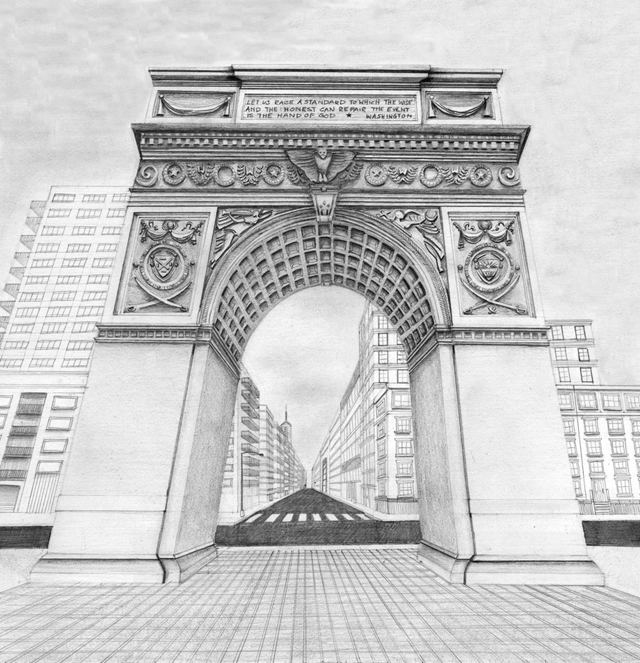Washington Square Park is an quaint place to escape the city for awhile. But I bet you don’t know the full history of the park and who or what lies below.
From 1797 to 1826, before it became a public space, Washington Square Park was a six and half acre plot designated as a potter’s field. To the East of the potter’s field were church cemeteries, the largest belonging to The Scotch Presbyterian Church. The poor, sick, brothel women and the rest of the city’s undesirables were buried here. Also hundreds of members of the African Zion Methodist Church were laid to rest here after their crypts filled up.
In the center of the square, about where the fountain is now, stood the gallows. The guilty were executed here until 1820. After their death, they were put in the ground with the others and helped fill the field to capacity with over 20,000 deceased. Ghost hunters should definitely check out the square at night, I bet there are a few spirits wandering around.
In 1827 Mayor Philip Hone allowed the city’s Seventh Regiment to use the square as a drill field. They needed more space so the borders of the field expanded to include almost fourteen acres. The field was lumpy and the militia’s heavy artillery sometimes unearthed crushed coffins and skulls, so the bodies on the top were exhumed and reburied elsewhere. The land was fenced in, paths were planned and grass was planted.
Ghosts or no ghosts, that didn’t stop the Knickerbockers from quickly buying empty properties around the square.The grand mansions on the south side have since been demolished. But the houses that sprang up on the north side were larger and grander, and they still exist today.
Fifth Avenue almost springs up from under the Washington Square Arch and travels North to house some of the most prestigious addresses in Manhattan. The Washington Square Arch has been a staple of the park since 1889. Designed by Stanford White the arch was first built out of wood and plaster to commemorate the 100th anniversary of George Washington’s inauguration. The prominent citizens loved it and paid for White to design it out of marble. Alexander Stirling Calder made the statue of Washington and Fredrick MacMonnies carved the relief work.
In 1917, painter John Sloan, dadaist Marcel Duchamp and three of their friends broke into the interior staircase of the arch. They climbed to the top, cooked food, lit Japanese lanterns, fired cap pistols, launched balloons and declared it the independent republic of New Bohemia. The citizens were outraged and the interior door of the arch was sealed. Some of the lucky have been able to tour the inside.
The fountain, which was replaced in 2018, is modeled on previous versions of the fountain going back to the 1840s. The previous fountain was refurbished in the 1930s and 1960s. The fountain reminds us of the now-covered Minetta Brook that even today still flows under the southeast corner of the park.
So whether you are are enjoying the day, watching street performers, protesting or just passing through Washington Square Park, remember who you are sharing this space with. Read on to see what other NYC parks are also cemeteries previously (more than you might think!)
Follow Untapped Cities on Twitter and Facebook! Get in touch with the author @DowntownDoodler. Check out more from the Downtown Doodler on Untapped.
Have a great week! **I got my facts from this wonderful book:
**I got my facts from this wonderful book:
Hamil, Pete. Downtown: My Manhattan. New York: Little, Brown and Company, 2004.






